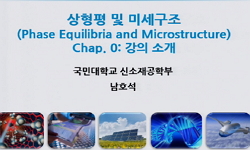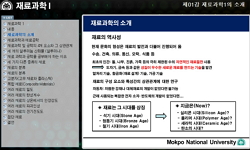Zirconium-doped $Li_{1.1}Co_{1-x}Zr_xO_2(0{\leq}x{\leq}0.05)$ powders as cathode materials for lithium ion batteries were synthesized using an ultrasonic spray pyrolysis method. Cyclic voltammetry and cyclic stability tests were performed, and the cha...
http://chineseinput.net/에서 pinyin(병음)방식으로 중국어를 변환할 수 있습니다.
변환된 중국어를 복사하여 사용하시면 됩니다.
- 中文 을 입력하시려면 zhongwen을 입력하시고 space를누르시면됩니다.
- 北京 을 입력하시려면 beijing을 입력하시고 space를 누르시면 됩니다.



충방전 과정중 구조가 안정한 Zr이 도핑된 LiCoO<sub>2</sub> 분말 = Structural Stability During Charge-Discharge Cycles in Zr-doped LiCoO<sub>2</sub> Powders
한글로보기https://www.riss.kr/link?id=A105209386
-
저자
김선혜 (큐슈대학교) ; 심광보 (한양대학교) ; 안재평 (한국과학기술연구원) ; 김창삼 (한국과학기술연구원) ; Kim, Seon-Hye ; Shim, Kwang-Bo ; Ahn, Jae-Pyoung ; Kim, Chang-Sam
- 발행기관
- 학술지명
- 권호사항
-
발행연도
2008
-
작성언어
Korean
- 주제어
-
등재정보
SCOPUS,KCI등재,SCIE
-
자료형태
학술저널
- 발행기관 URL
-
수록면
167-171(5쪽)
- DOI식별코드
- 제공처
-
0
상세조회 -
0
다운로드
부가정보
다국어 초록 (Multilingual Abstract)
Zirconium-doped $Li_{1.1}Co_{1-x}Zr_xO_2(0{\leq}x{\leq}0.05)$ powders as cathode materials for lithium ion batteries were synthesized using an ultrasonic spray pyrolysis method. Cyclic voltammetry and cyclic stability tests were performed, and the changes of microstructure were observed. The solubility limit of zirconium into $Li_{1.1}CoO_2$ was less than 5 mol%, and monoclinic $Li_2ZrO_3$ phase was formed above the limit. The Zr-doping suppressed the grain growth and increased the lattice parameters of the hexagonal $LiCoO_2$ phase. The Zr-dopiong of 1mol% resulted in the best cyclic performance in the range of $3.0{\sim}4.3V$ at 1C rate (140 mA/g); the initial discharge capacity decreased from 158 mAh/g to 60 mAh/g in the undoped powder, while from 154 mAh/g to 135 mAh/g in the Zr-doped powder of 1 mol% after 30 cycles. The excellent cycle stability of Zr-doped powder was due to the low polarization during chargedischarge processes which resulted from the delayed collapse of the crystal structure of the active materials with Zr-doping.
동일학술지(권/호) 다른 논문
-
- 한국세라믹학회
- 공양표
- 2008
- SCOPUS,KCI등재,SCIE
-
(40-x)BaO⋅xFe2O3⋅60P2O5 유리의 Fe3+이온에 관한 전자스핀공명 연구
- 한국세라믹학회
- 강은태
- 2008
- SCOPUS,KCI등재,SCIE
-
Sphene-Pink 안료합성 및 Malayaite 결정이 발색에 미치는 영향
- 한국세라믹학회
- 이현수
- 2008
- SCOPUS,KCI등재,SCIE
-
고분자전해질 연료전지용 바이폴라 플레이트의 표면형상과 전기적 특성
- 한국세라믹학회
- 송연호
- 2008
- SCOPUS,KCI등재,SCIE




 ScienceON
ScienceON





